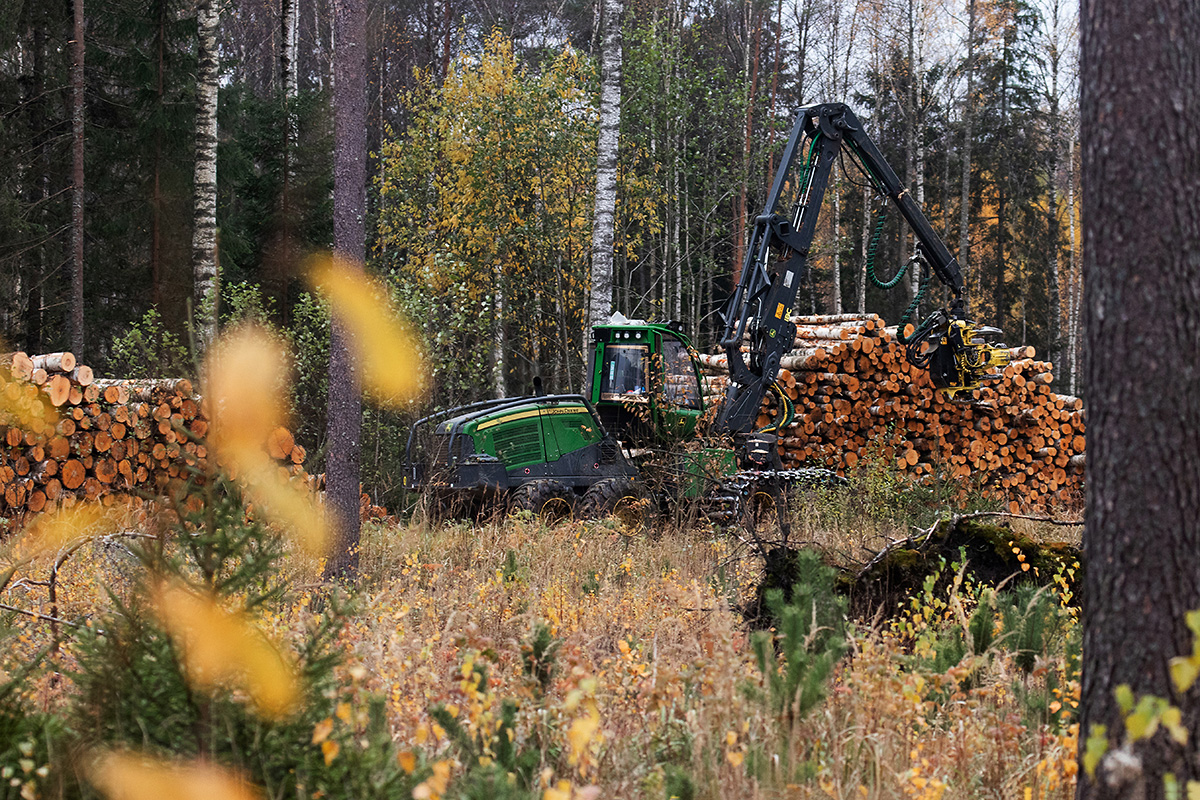Sustainable forestry helps to maintain or increase carbon stocks in the long run
Forests generally store 20–100 times more carbon per area unit than, for example, arable land and therefore play an important role in regulating the concentration of carbon in the atmosphere.

The role of forests in mitigating climate change is important – the forest produces oxygen from carbon dioxide during photosynthesis, thus regulating air quality, weather stability, and climate. Woody plants sequester carbon from the atmosphere, which accumulates in biomass after photosynthesis. Forests, mainly tree trunks, branches, and leaves, contain 80% of terrestrial and 40% of underground (including roots) organically sequestered carbon. According to various data, the total carbon stock of forests fluctuates widely, but is almost comparable to the total carbon stock of the atmosphere. Although mires and grasslands also do a good job of sequestering carbon, it is the productive forest that offers nature-based solutions to quickly influence the global carbon cycle. The widespread use of fossil products has released a huge amount of additional carbon into the carbon cycle that has been hidden in the earth’s crust, but balancing the global carbon balance is crucial to curbing climate change.
Sustainable forestry helps to maintain or increase carbon stocks in the long run. The latter can, in turn, be divided into four major categories: stored carbon in biomass, in soil, in timber products, and the benefits of the substitution effect. In most cases, more attention is paid to changes in the carbon in the biomass, but on average, 70% of the carbon of the forests is located in the soil in Estonia. However, this focus is not wrong – Estonian studies have shown that changes in soil carbon emissions are slow and less related to felling than previously thought. Using long-lived timber products instead of fossil materials will help to reduce emissions from other sectors.
Sustainable forestry also offers a solution to the problem of saturation of the carbon stored in old and mature forests, in which case mature forests no longer sequester carbon. Using natural techniques, sustainable forest management can offer many potentially positive spill-over effects in terms of climate change mitigation and adaptation, biodiversity protection, microclimate regulation, protection from soil erosion, protection of the coastal areas, and water and flood management.
In order to fulfil its climate control function, the use of timber should be the kind as to maintain or increase the overall carbon stock in the long run. A younger forest stand grows faster than an older one and thus sequesters more carbon per unit of time. The carbon storage capacity of an older stand will gradually decrease – depending on the vegetation site type, at some point, carbon emissions and sequestration may be offset (or emission may exceed sequestration). However, in older forests, where sequestration is declining, the forest acts as a carbon sink and thus helps to combat climate change. From the point of view of the use of timber, in turn, the quality of timber is important, which starts to decline at a certain age (this aspect is important only in the managed forest). However, when considering the benefits of the substitution effect, longer-lasting products that require a higher quality timber input have a greater impact.
| Above-ground biomass | Underground biomass | Dead wood | Soil | Timber products | |
|---|---|---|---|---|---|
| 2020 | 132.8 | 31.3 | 4.6 | 380.3 | 10.3 |
| 2015 | 132.2 | 31.1 | 4.6 | 377.6 | 9.2 |
| 2010 | 122.6 | 28.9 | 4.0 | 364.4 | 8.2 |
| 2005 | 116.6 | 27.5 | 3.1 | 358.8 | 7.6 |
| 2000 | 114.1 | 26.9 | 2.6 | 349.2 | 6.2 |
| 1990 | 105.7 | 24.9 | 2.5 | 344.1 | 5.7 |
* Data is updated at five-year intervals.
Source: Environment Agency
Text: Madis Raudsaar
Editor: Madis Raudsaar
Last modified: 01.12.2022
________________________________
- K. Karoles. Metsade mõjust süsinikuringele ja kliimamuutustele. Eesti Mets, 1/2010.
- S. Kuresoo. Metsa rohkem raiudes kliimamuutusi ei vähenda.
- A. Anger-Kraavi, E. Pärt, M. Raudsaar, M. Nikopensius, K. E. Kraavi, J. Duggan, M. J. Sanz. Mets ja kliimamuutused. Raport. Cambridge´i Ülikool ja Eesti Keskkonnaministeerium, 2020.